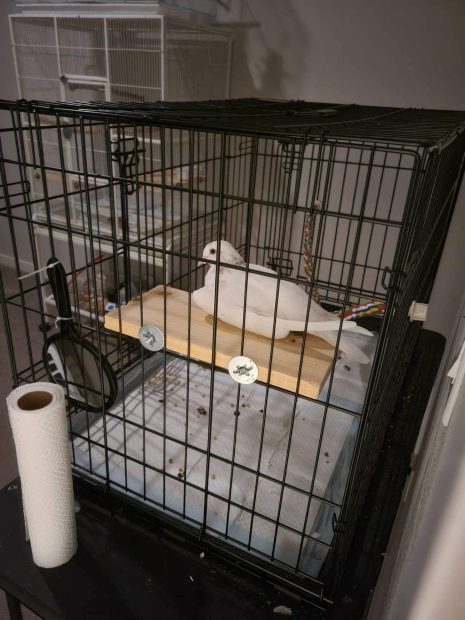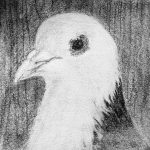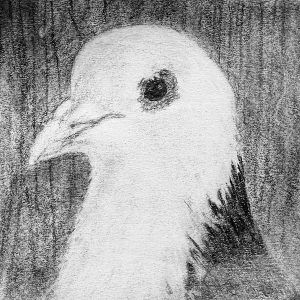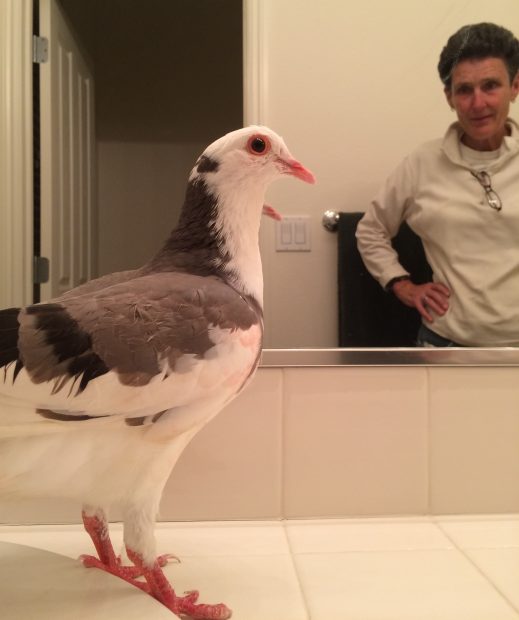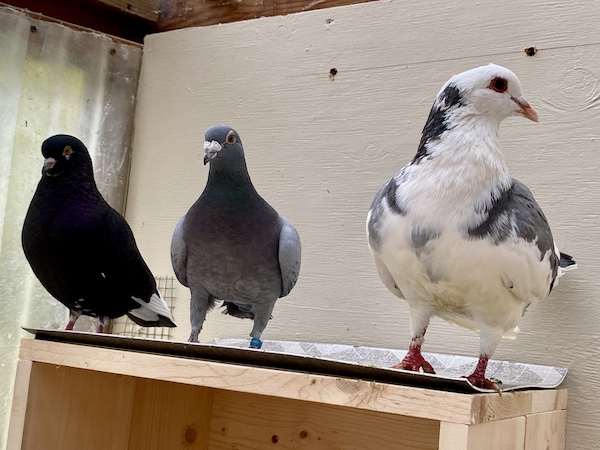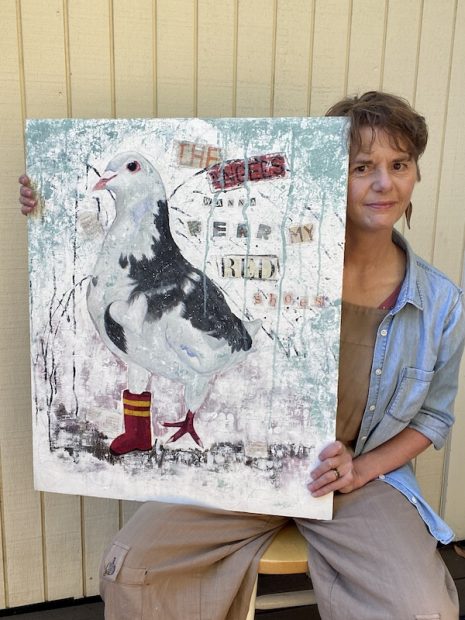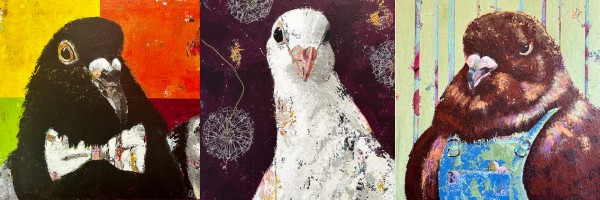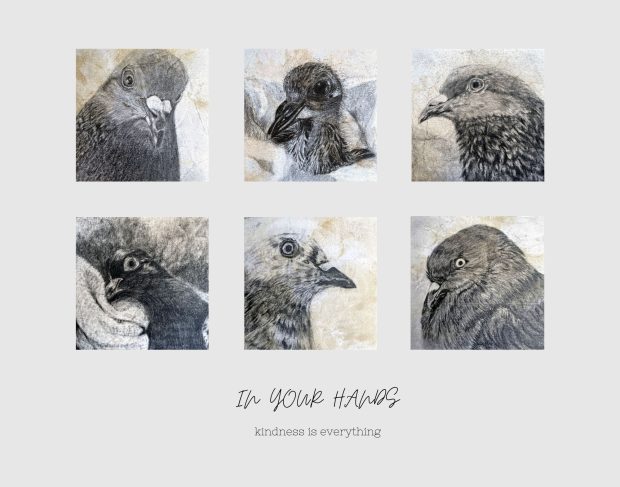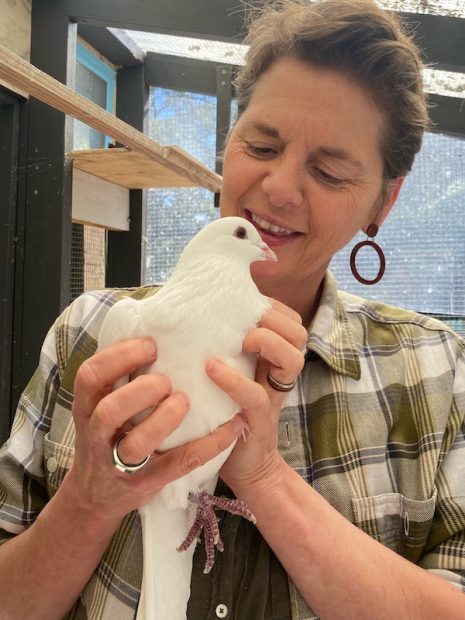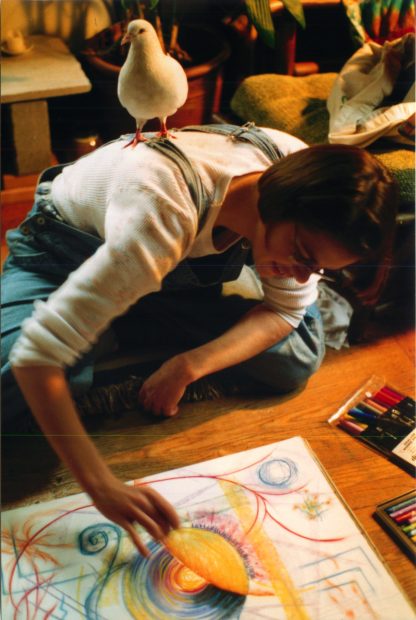Guest Post by Sindy Harris
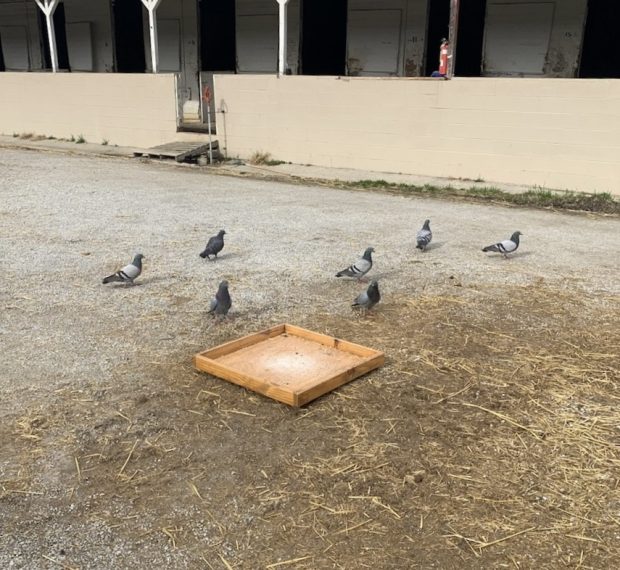
Churchill Downs poisons pigeons
These outlandish claims are starting to be tested as more and more birds die in mass bird deaths in what can only be observed as painful suffering. People who witness birds dying in the streets have reported these occurrences to their wildlife authorities. Residents of Portland, for example, were shaken after two incidents, in 2014 and 2018, when crows were “literally raining down from the sky,” crashing onto the pavement, screeching and flapping, with their eyes rolling back in their heads. “They would lie on their sides and pedal their feet while they seized and then died.” Crow carcasses littered 30 to 40 Portland city blocks. This caused Portland’s City Council to ban the use of Avitrol in 2019.
Mass bird deaths have also occurred in New York City, San Francisco, Boulder, Colorado, Fort Collins, Colorado and Los Angeles. These cities and others have banned the use of Avitrol. The reason: Avitrol poisoning of birds is inhumane, and the use of Avirol risks exposing the general public, local wildlife and the entire food chain to a dangerous neurotoxin.
One significant problem with the use of Avitrol is that it cannot be used as intended. Avitrol’s labeling specifically details the EPA’s requirements for its correct use: limited, scattered distribution in areas that provide feeding opportunities for only the necessary number of targeted birds. Given that the idea behind the poison is not to kill the birds, but only to scare them away, it should be sufficient to only poison a few in order to get the horrific show of discomfort needed. Yet, it is evident that no effort is made to feed just a few birds as mass bird deaths have occurred and continue to occur.
Additionally, it is difficult, if not impossible, to imagine limiting the avitrol-laced corn to a small but necessary number of birds since entire flocks are often hungry, even starving in cold winters. Indeed, the Avitral Corporation’s Data Sheet admits that “pest birds usually readily accept Avitrol grain.” And, there is always the likelihood that businesses that pay pest control companies actually intend to kill the entire flock, not just scare them off temporarily. This appears to be the case with Churchhill Downs. After all the horses have left the backside of Churchill Downs (and do not return until mid-March), that is when the pest control man makes daily visits to the barn area to poison the pigeons. By the time the horses return, the flocks have been killed. But new pigeons will move in to fill their place and then they too will be killed. Poisoning is not effective flock management!
And, it isn’t just the pigeons. Hawks abound around Churchill Downs because their favorite meal –pigeon — makes its home there. Hawks, cats, and who knows how many other predators, eat these poisoned birds and die themselves. A long-time employee of Churchill Downs reported that predator birds, such as hawks, used to be plentiful at the barn, but in in recent years, they have declined significantly.
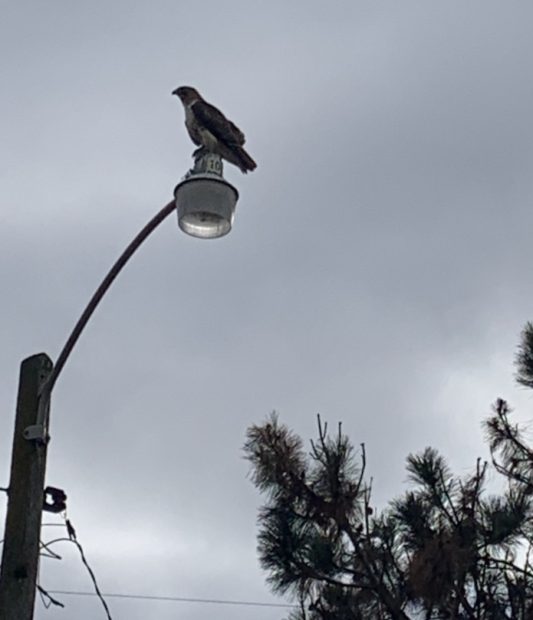
Hawks & other wildlife are killed by eating the poisoned pigeons
Dovecotes and pigeon lofts can be a real solution. Dovecotes and lofts are homes for pigeons away from the place or places where they are creating problems. Pigeons are fed pigeon seed at the dovecote and provided clean water, so the flock makes the dovecote their new home. Volunteers clean the lofts and usually swap pigeon eggs for fake, plastic ones, thereby controlling the pigeon population.
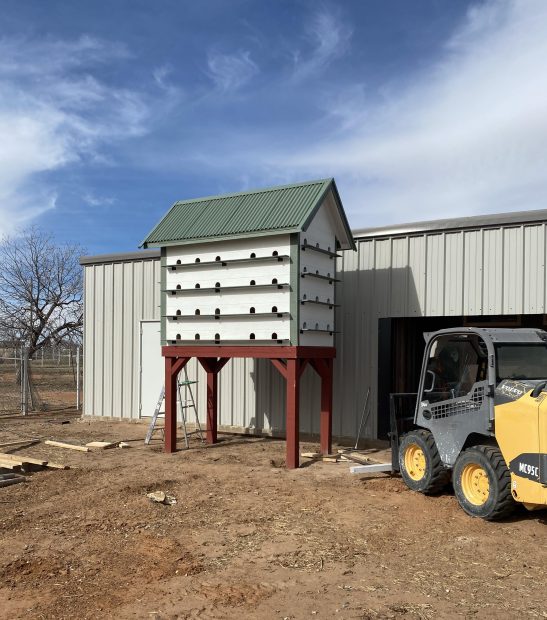
Dovecotes manage pigeon flocks better, safely & humanely
Many countries in Europe have been using this humane alternative to Avitrol for decades. From 1988 to 1992, for example, Basel, Switzerland halved its street pigeon population by using pigeon lofts. The city had previously tried trapping, shooting, and oral contraceptives, all of which failed to effectively reduce pigeon numbers. Basel built lofts in city buildings and established areas where feeding was permitted near the lofts. Eggs were removed from the lofts, and during the four-year period where the lofts were monitored, the pigeon population was reduced by 50 percent.
Paris, France also uses dovecotes. It put up its first contemporary pigeon loft in 2003. Its program has the support of the French Society for the Protection of City Birds. A spokesperson for the city said that the new plan works to “improve relations between Parisians and these birds” and reduces the damage caused by droppings.
Given the effective alternative of a dovecote and the growing evidence about the dangers of Avitrol and the pain and death it causes innocent birds and the animals that eat them, Churchill Downs must stop the poisoning of pigeons and invest in a humane solution.
Sindy Harris
I am a pigeon advocate. I have a sanctuary for rescued, domesticated pigeons in Jacksonville, Oregon. I also have a pigeon supply store, which funds the building of aviaries and dovecotes for feral pigeons. (www.Sindyspigeonservice.com)
I recently learned from first hand sources that Churchill Downs was poisoning its pigeon flocks with a neurotoxin called Avitrol. I hope that you can help be a voice to stop this practice. Please add your comments to Churchill Downs’ Facebook post where scores of people are writing in to oppose this cruel, dangerous and ineffective practice.
And to learn more about horse racing, visit www.HorseRacingKills.org


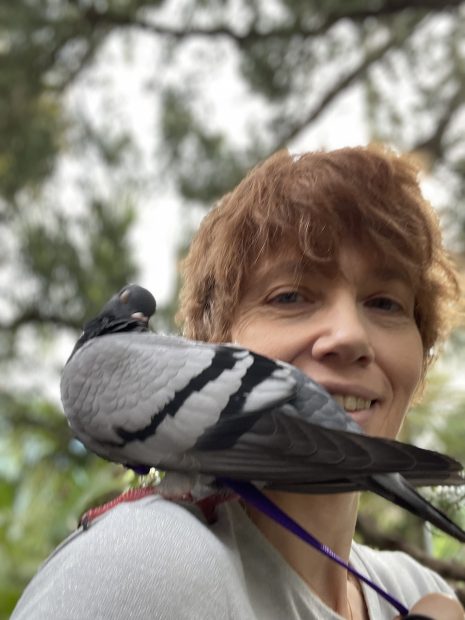
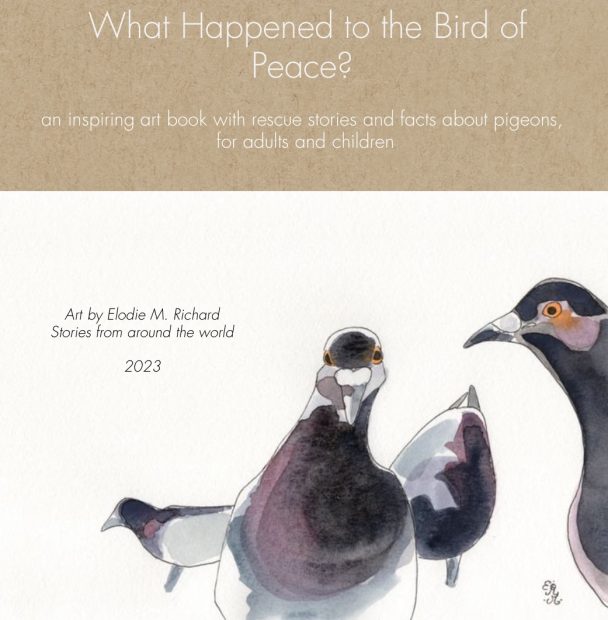
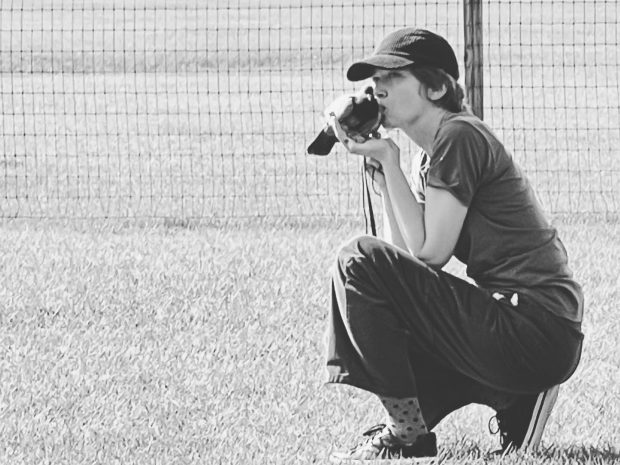
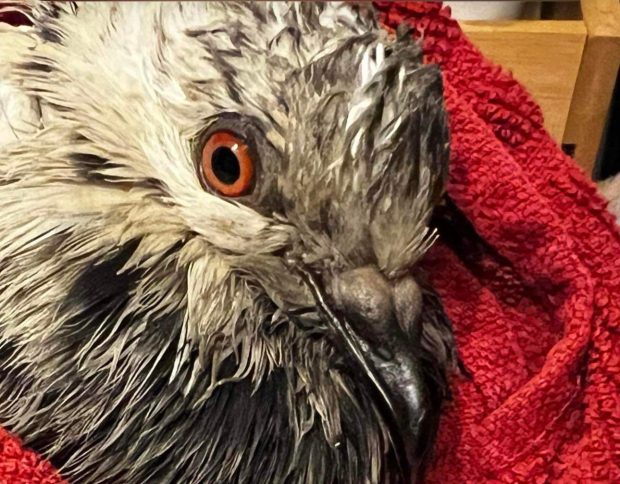
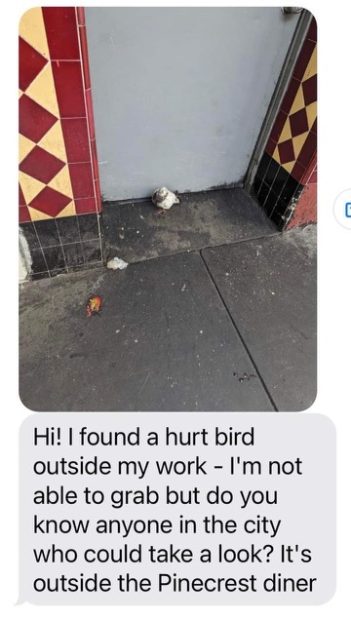
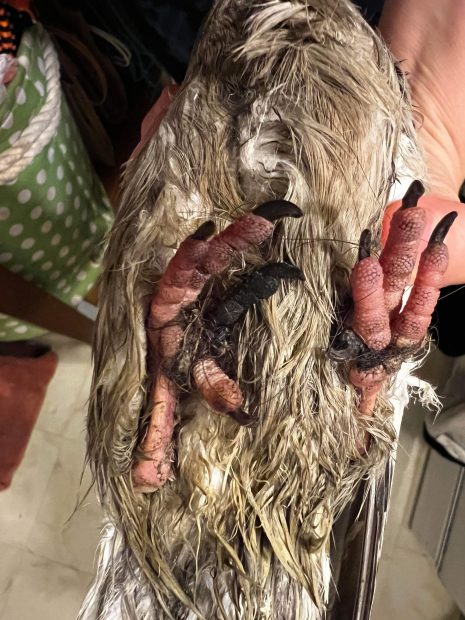
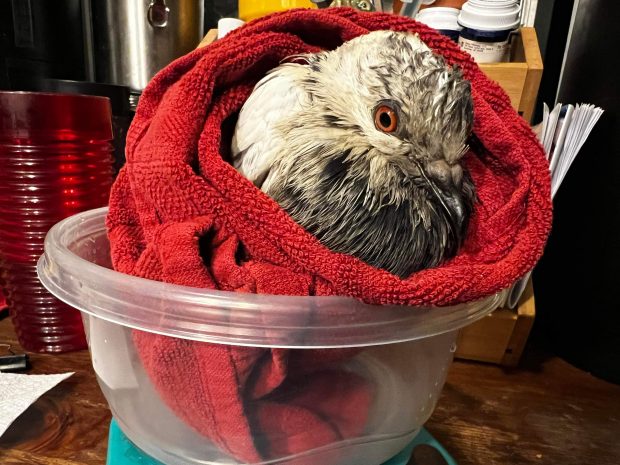
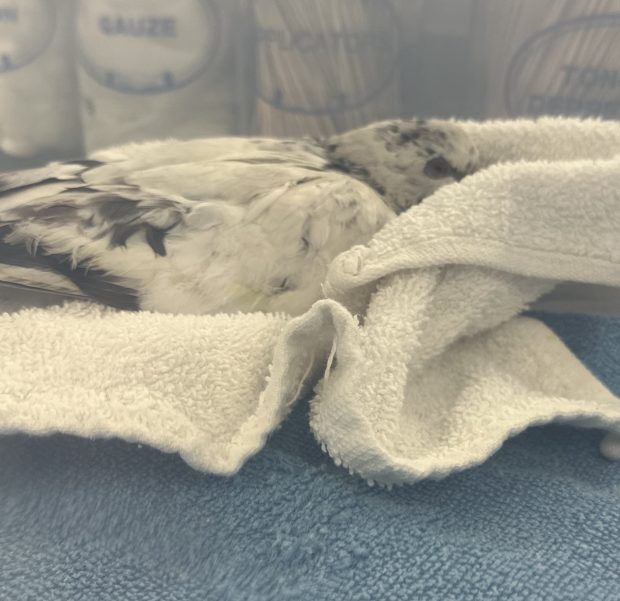
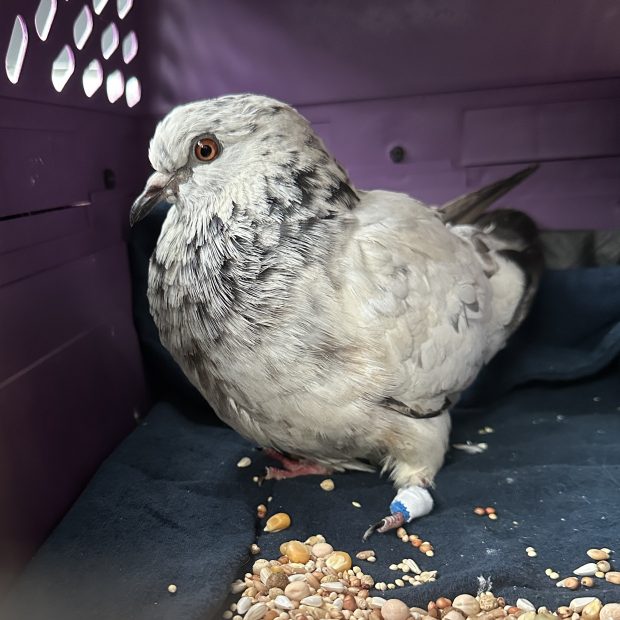
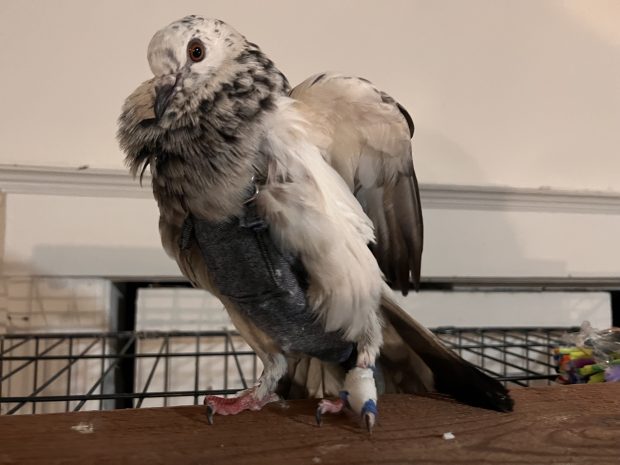
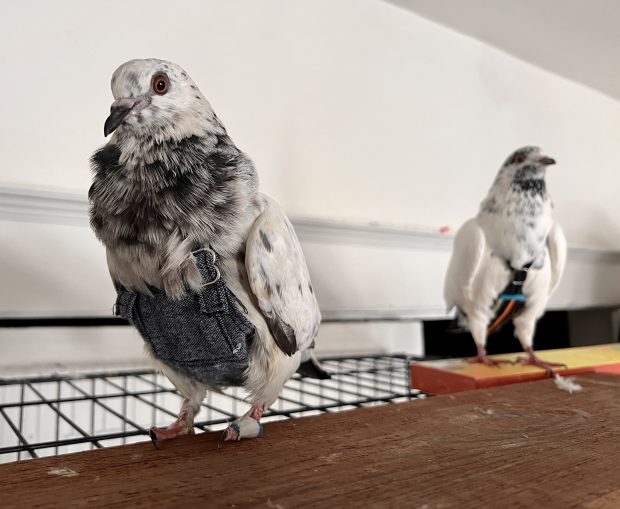
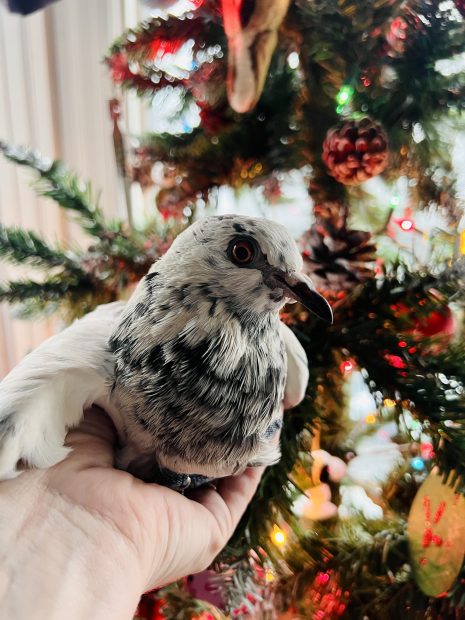
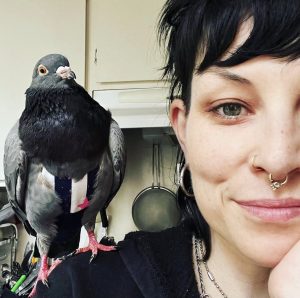 Dion, an artist by nature and a long-time bartender by trade, had always been interested in helping animals but never quite found a way to invest in the pursuit… until the Covid pandemic stopped the world and everything changed. One single pigeon rescue turned into many, and after making a few trips to WildCare with injured city pigeons, Dion resolved to find a new career helping animals. In the past four years, Dion has helped with the rescue, rehabilitation, release, and placement of hundreds of injured and orphaned pigeons. She volunteers with Palomacy as a Facebook Help Group Moderator, a Hotline Operator, and Rescue Volunteer. She currently works at WildCare’s pigeon-friendly Wildlife Center as the Social Media & Hotline Manager and lives in beautifully foggy San Francisco with her husband and son—who both help with pigeon rescue in every way they can—and an always fluctuating number of rescue animals, including Pickles the Pigeon.
Dion, an artist by nature and a long-time bartender by trade, had always been interested in helping animals but never quite found a way to invest in the pursuit… until the Covid pandemic stopped the world and everything changed. One single pigeon rescue turned into many, and after making a few trips to WildCare with injured city pigeons, Dion resolved to find a new career helping animals. In the past four years, Dion has helped with the rescue, rehabilitation, release, and placement of hundreds of injured and orphaned pigeons. She volunteers with Palomacy as a Facebook Help Group Moderator, a Hotline Operator, and Rescue Volunteer. She currently works at WildCare’s pigeon-friendly Wildlife Center as the Social Media & Hotline Manager and lives in beautifully foggy San Francisco with her husband and son—who both help with pigeon rescue in every way they can—and an always fluctuating number of rescue animals, including Pickles the Pigeon. 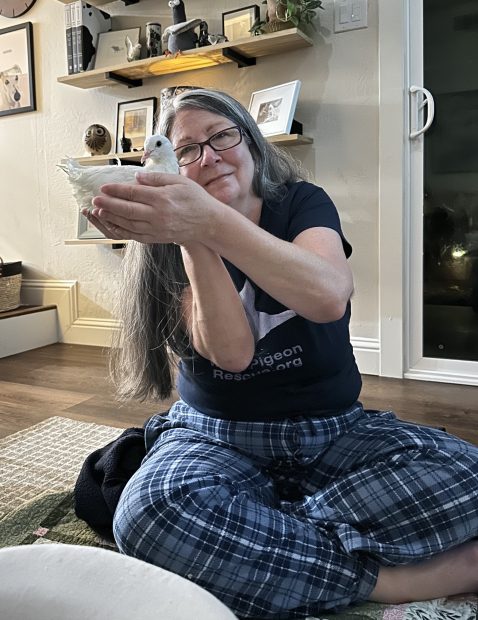
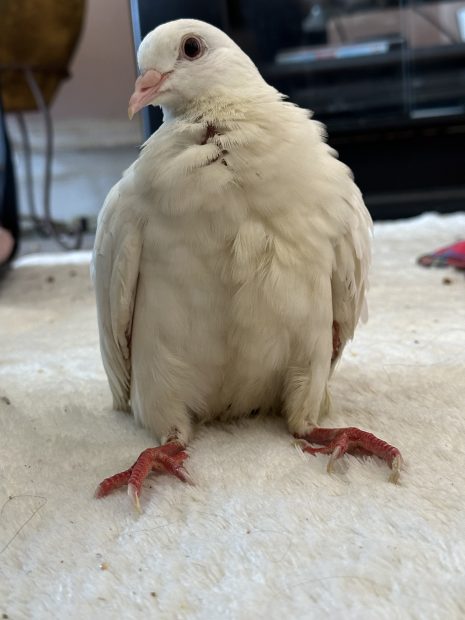
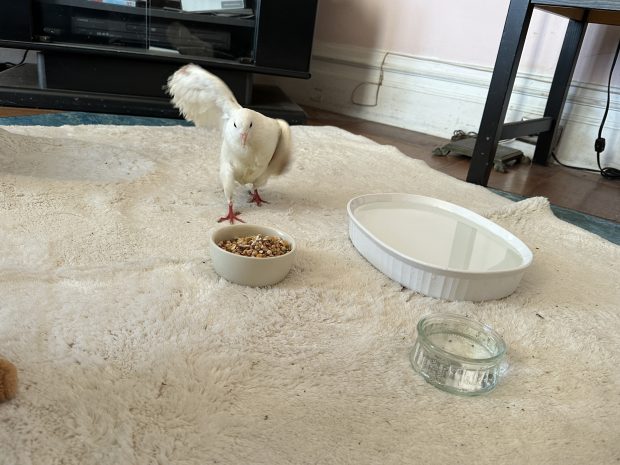
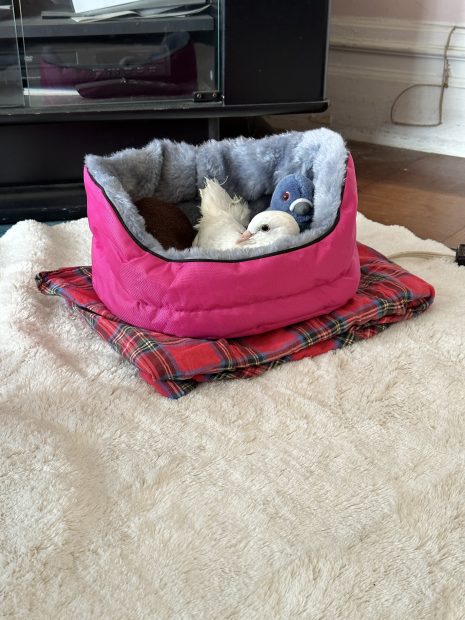
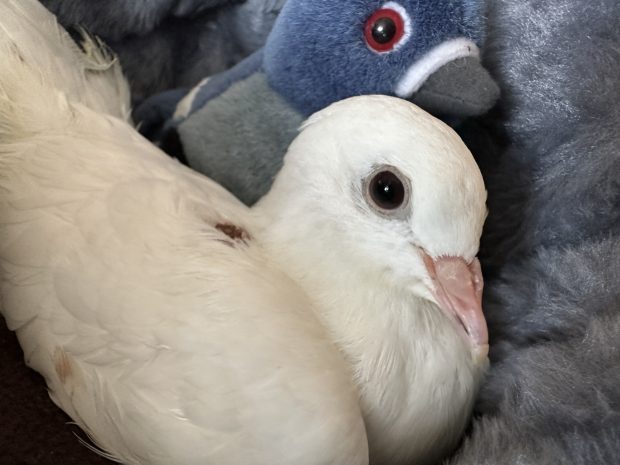
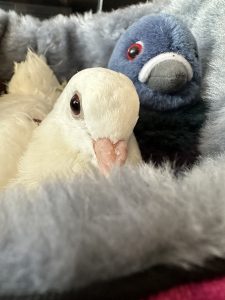
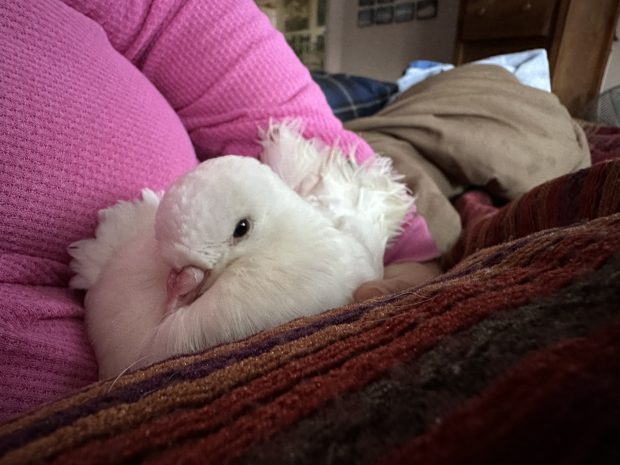
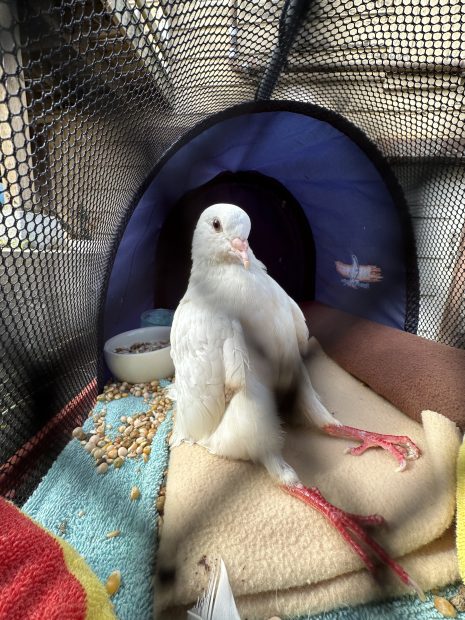
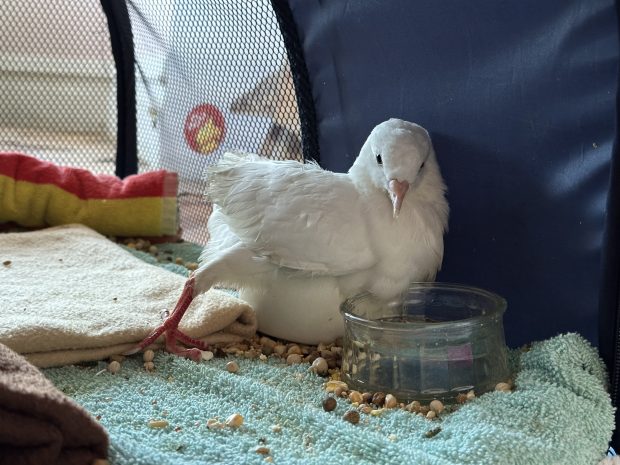
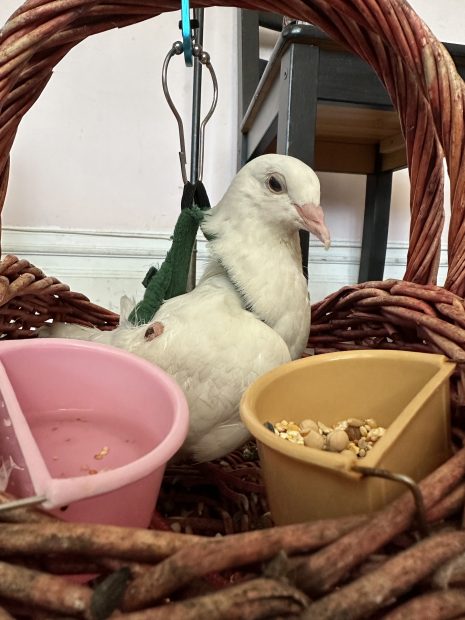
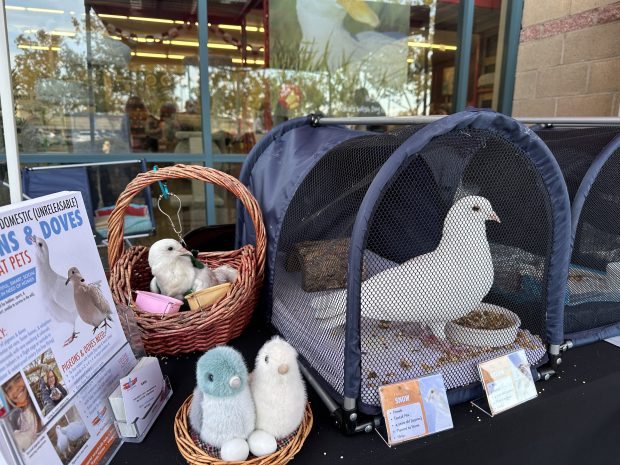
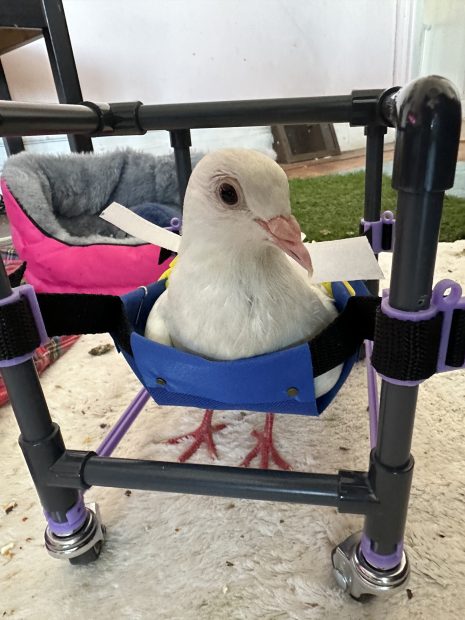
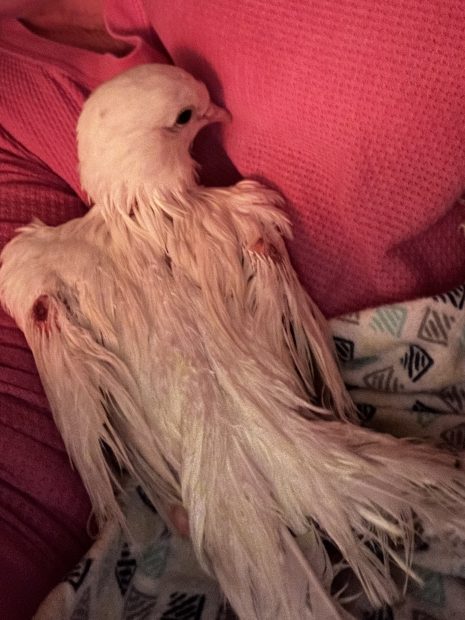
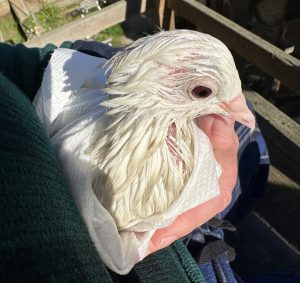
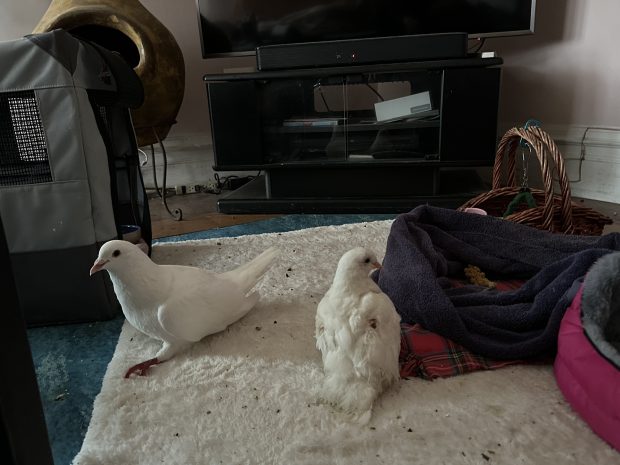
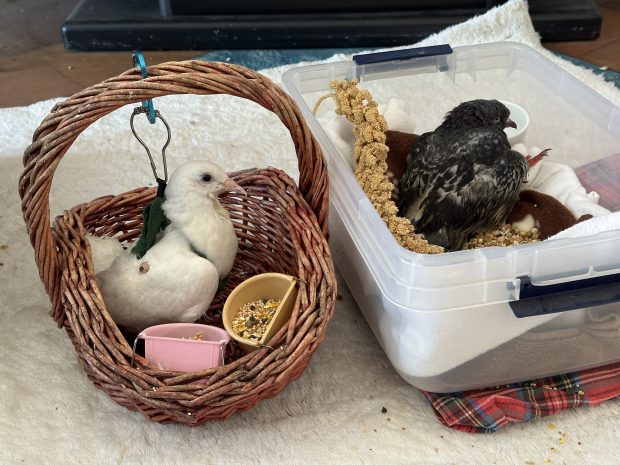
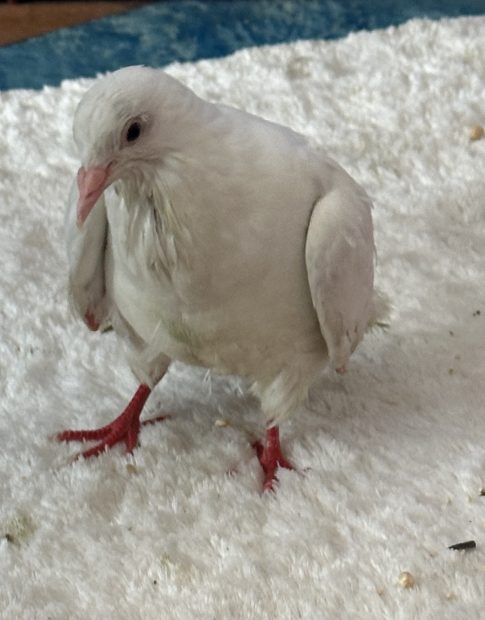
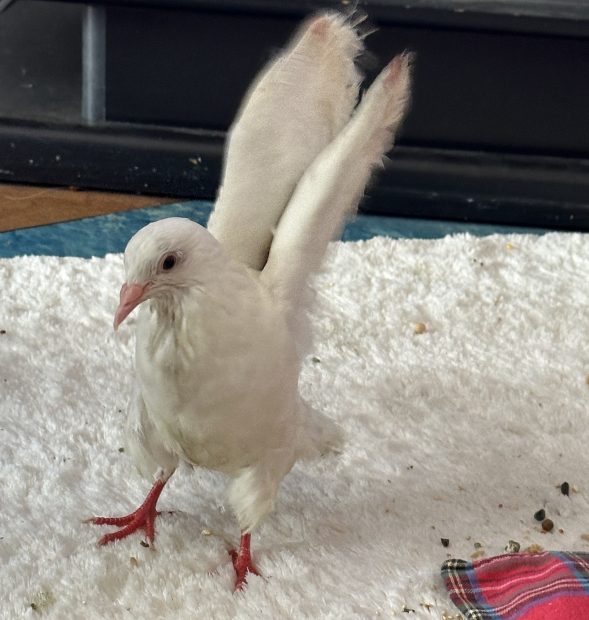
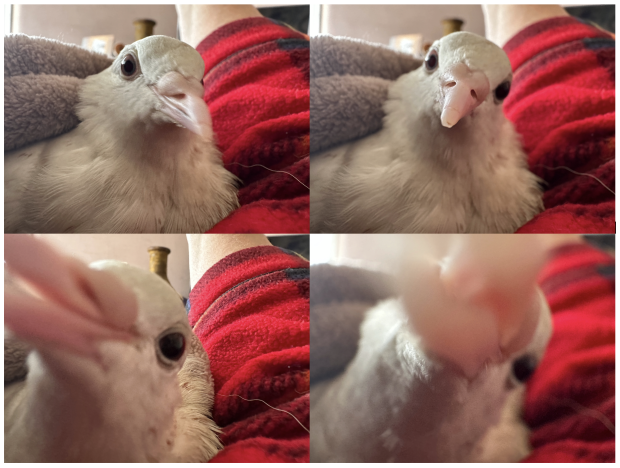
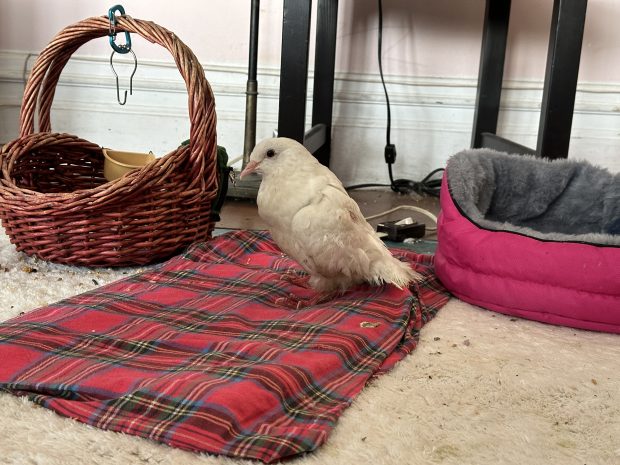
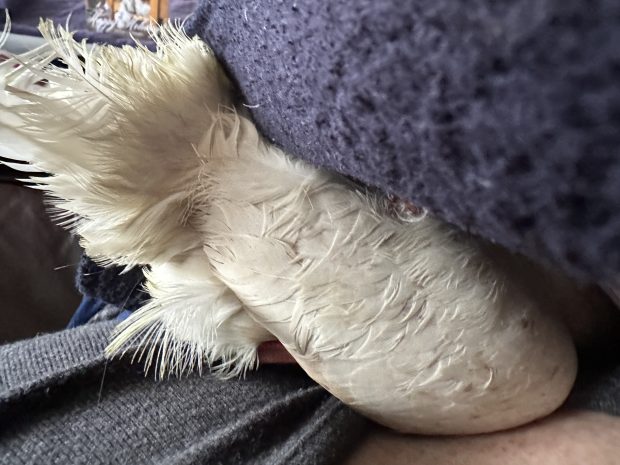
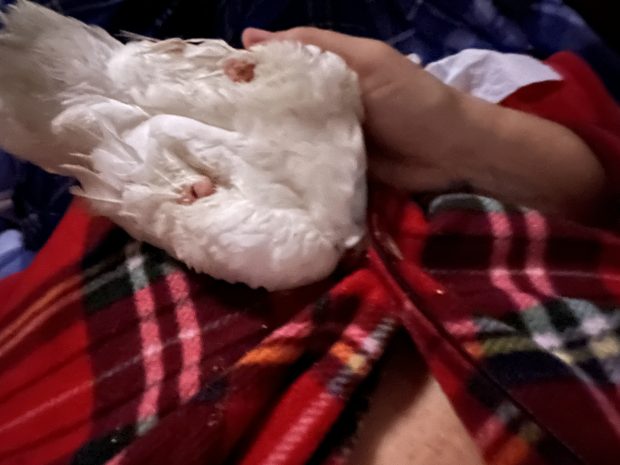
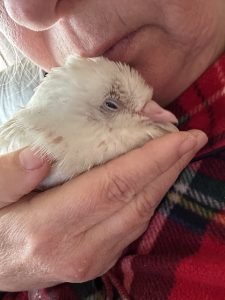
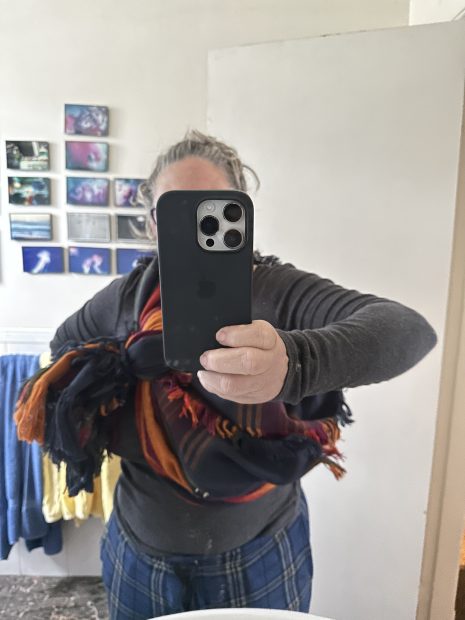
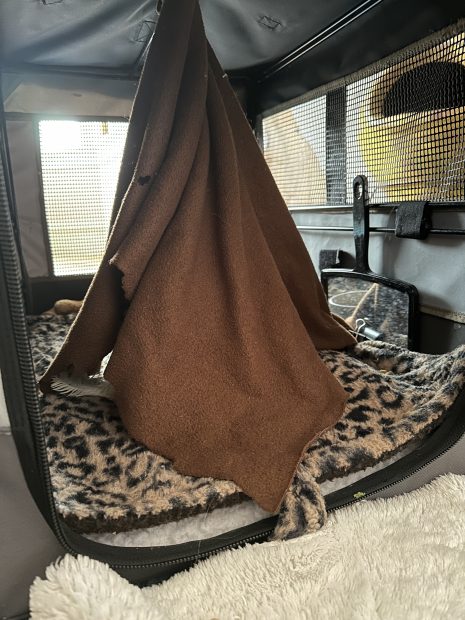
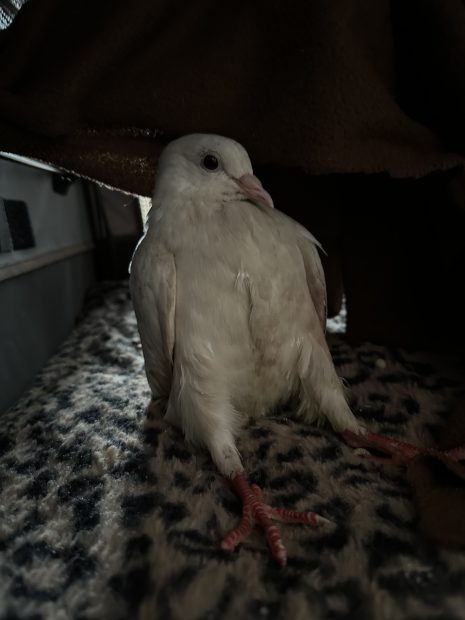
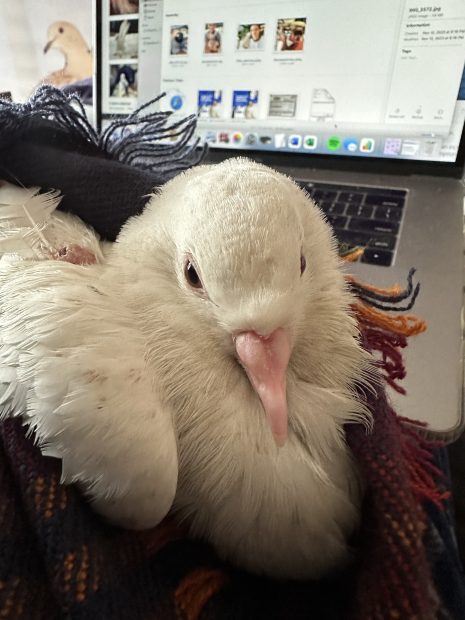
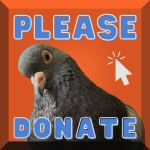
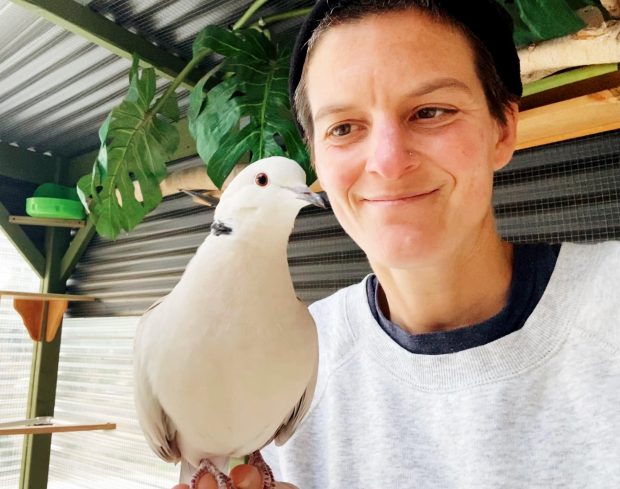
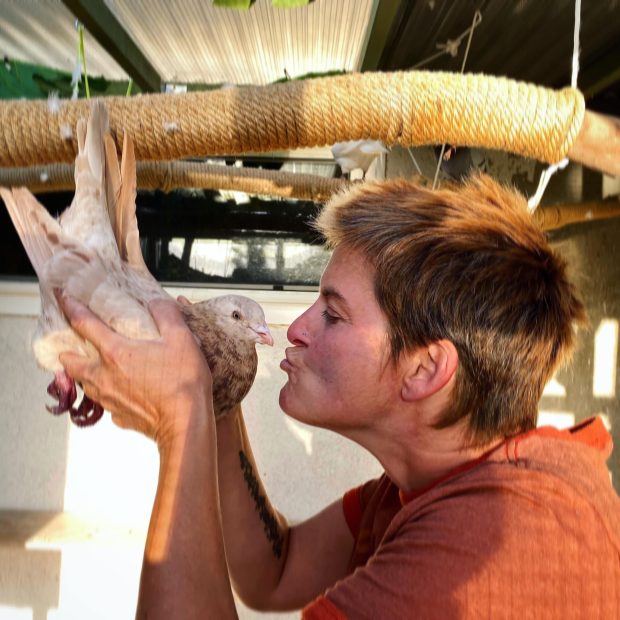
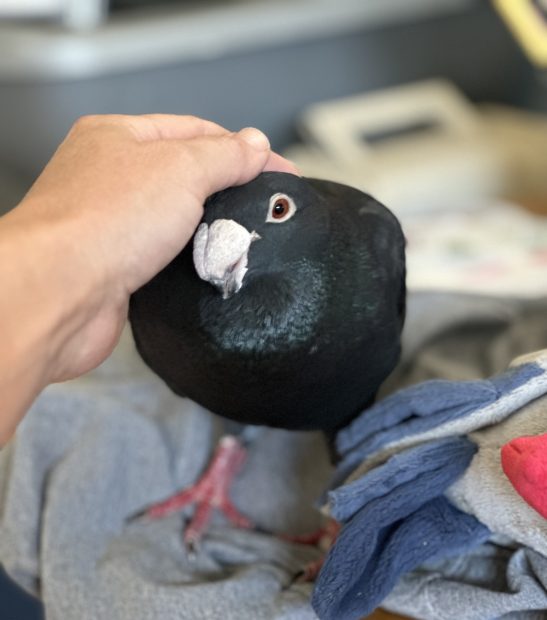

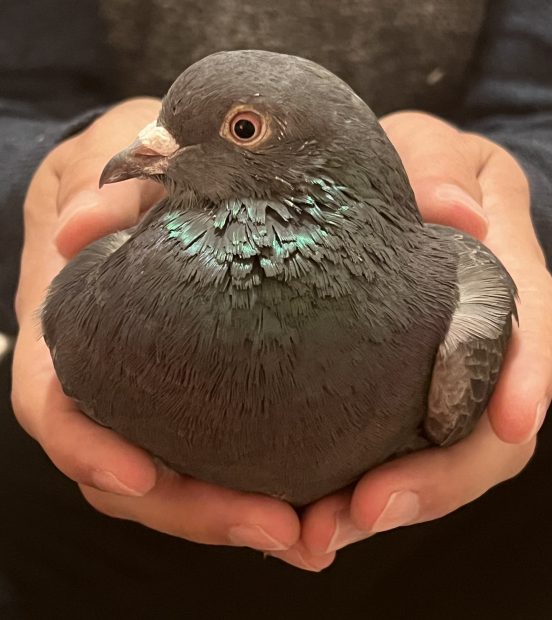

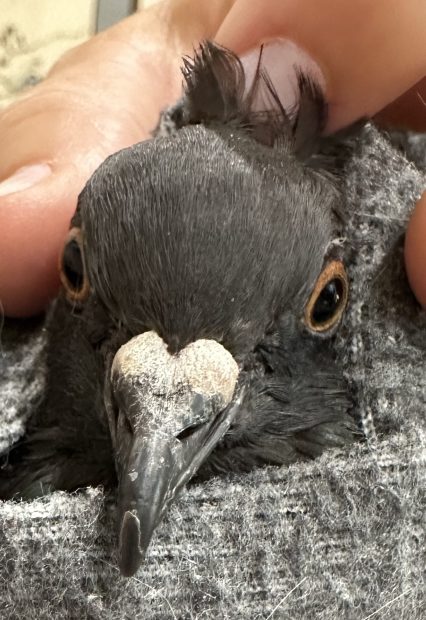
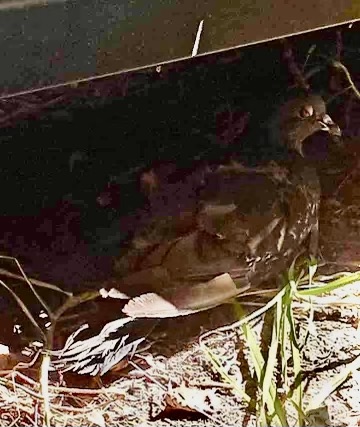
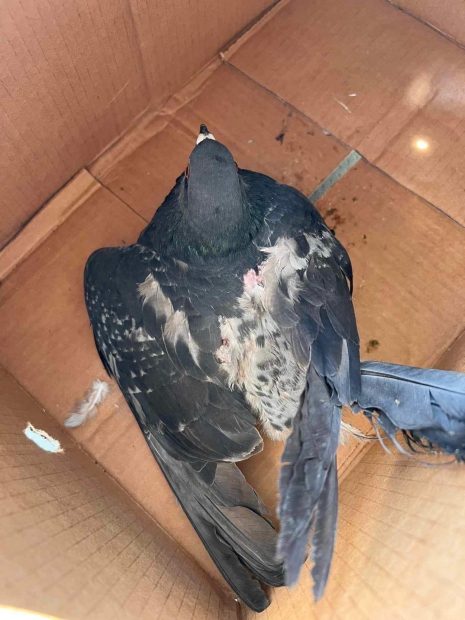
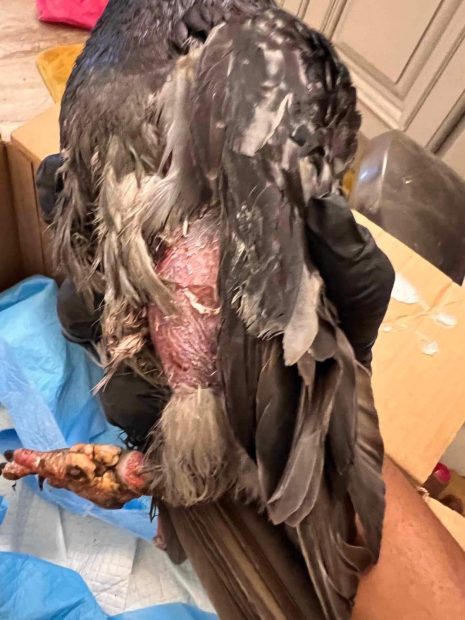
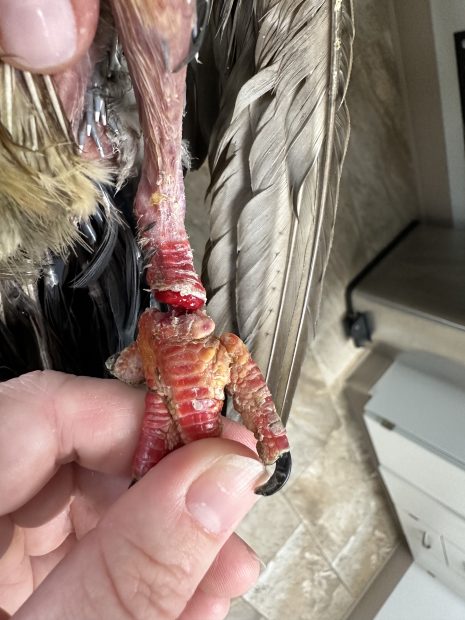
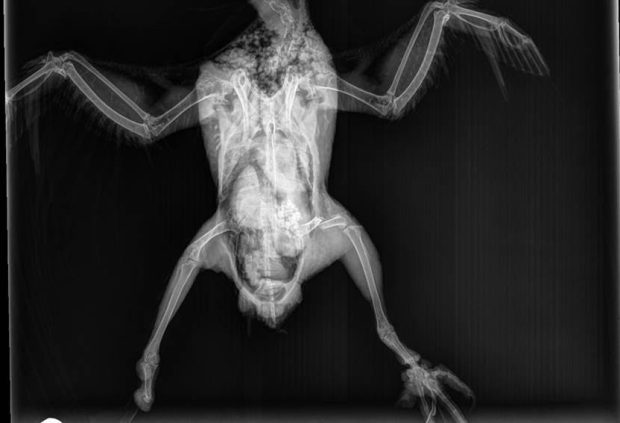
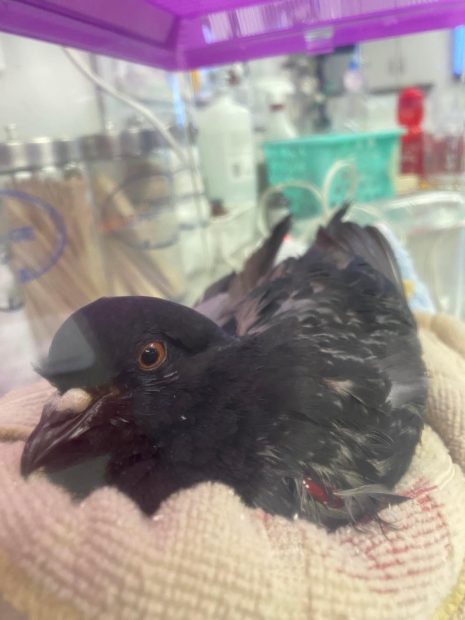
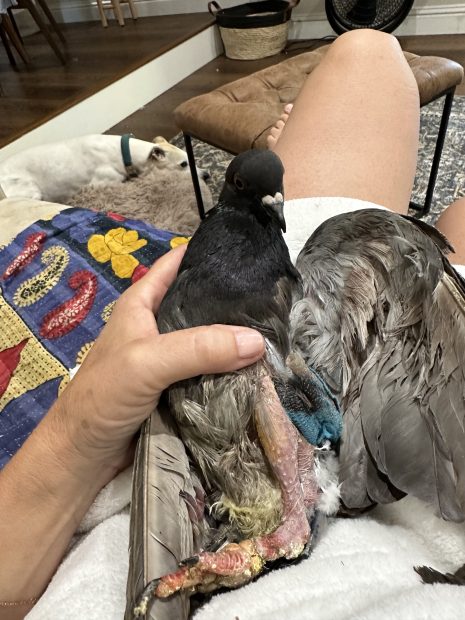
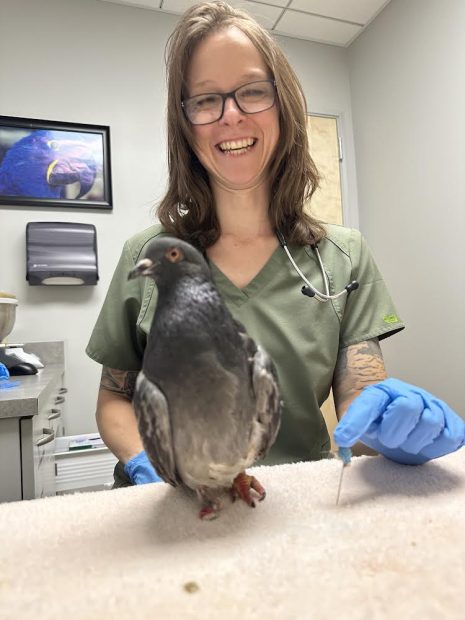
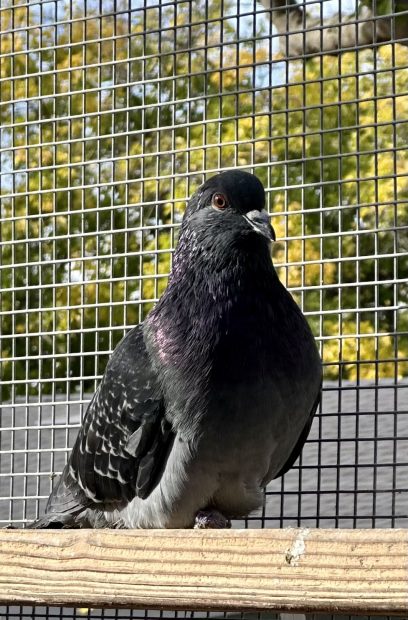

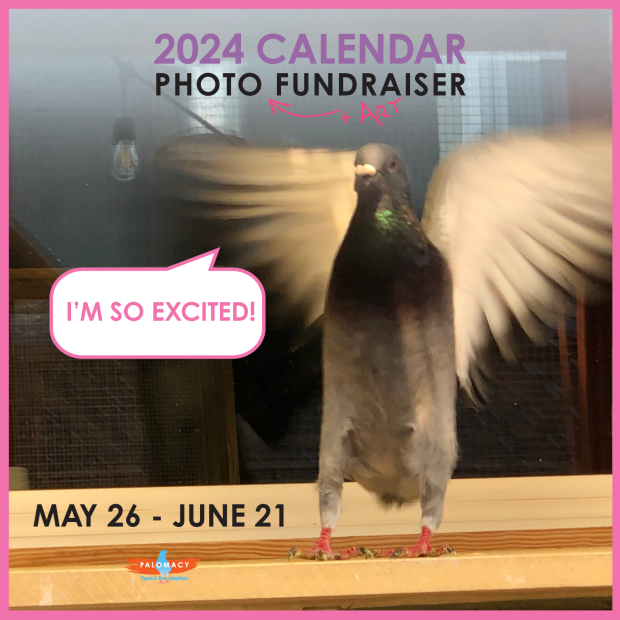
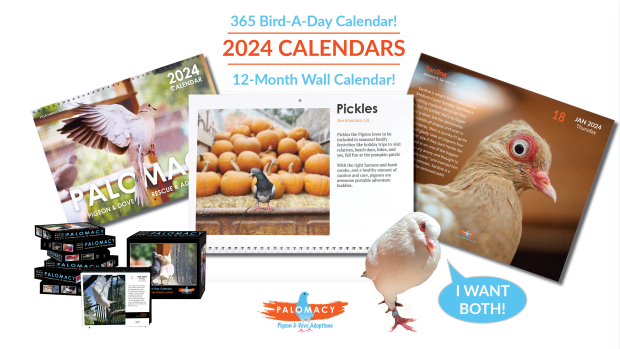
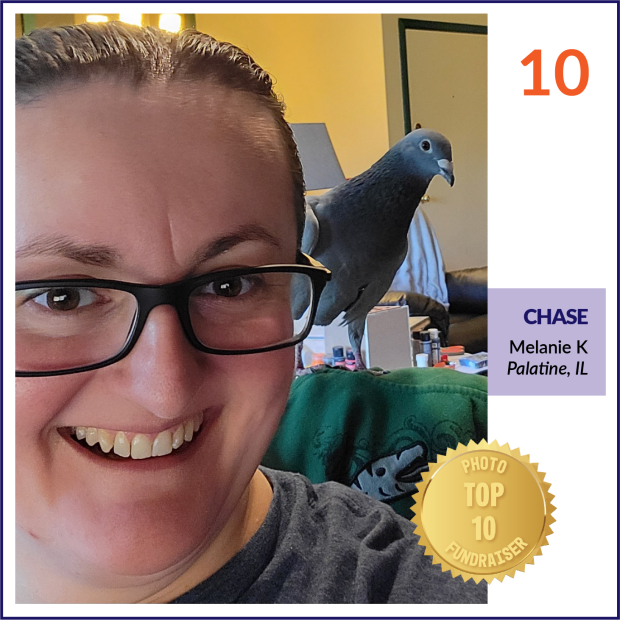
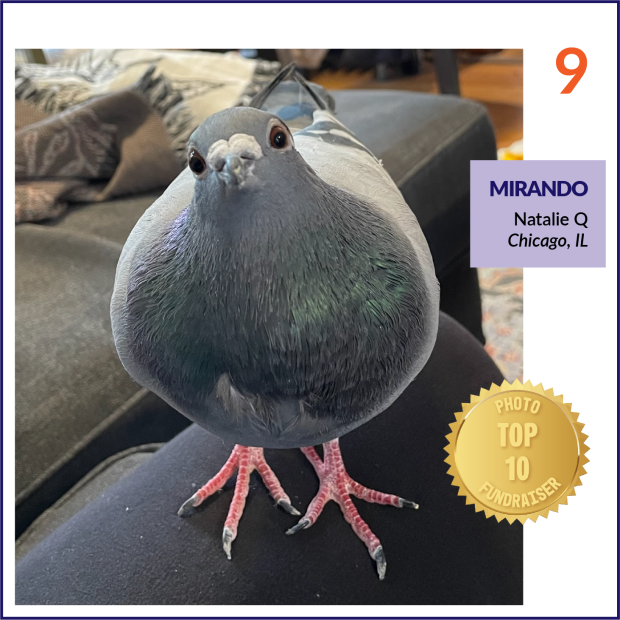
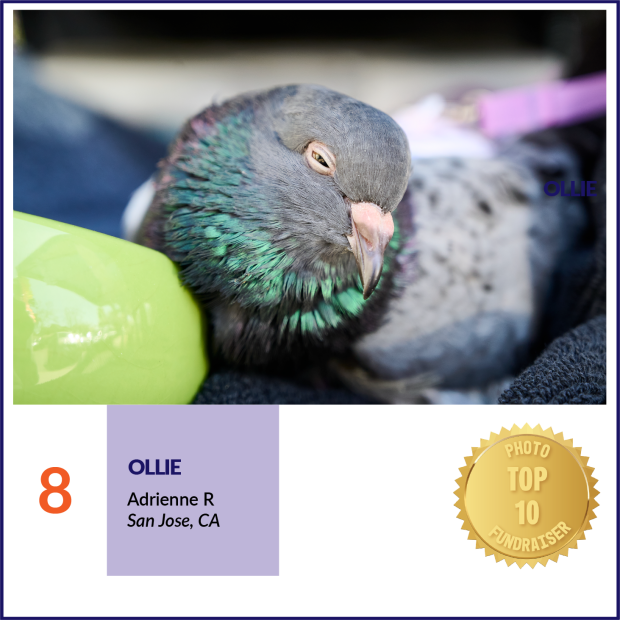
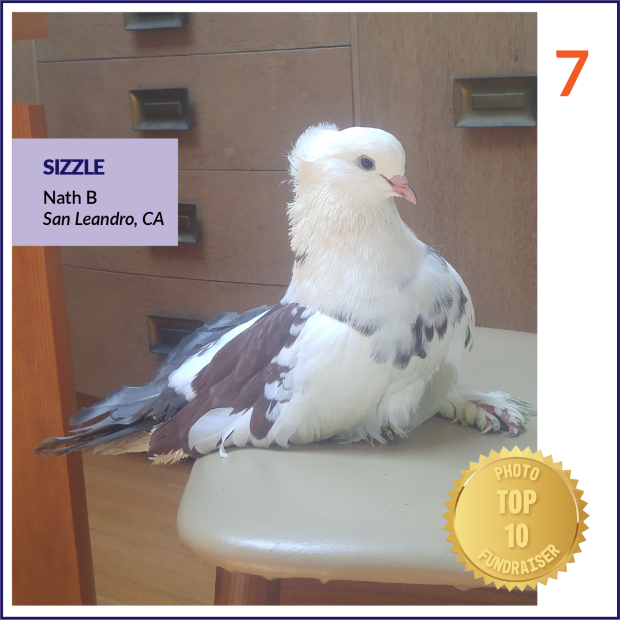
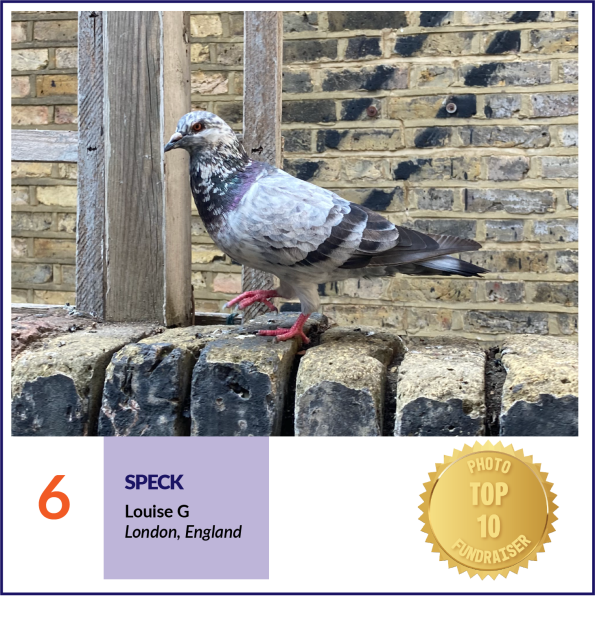
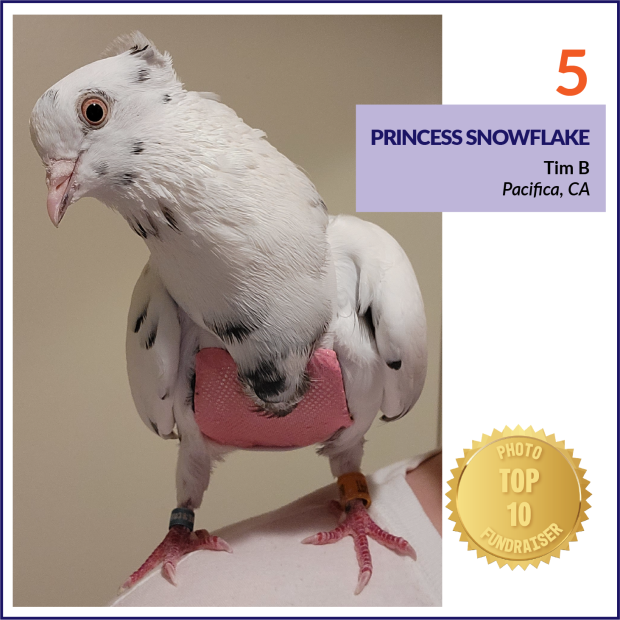
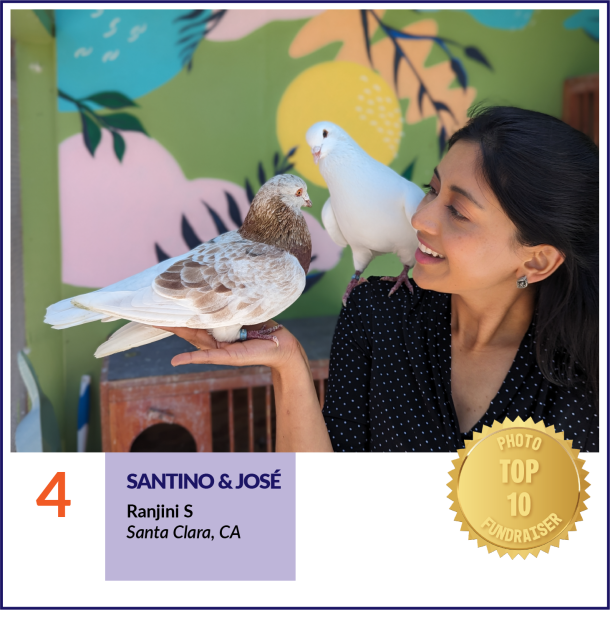
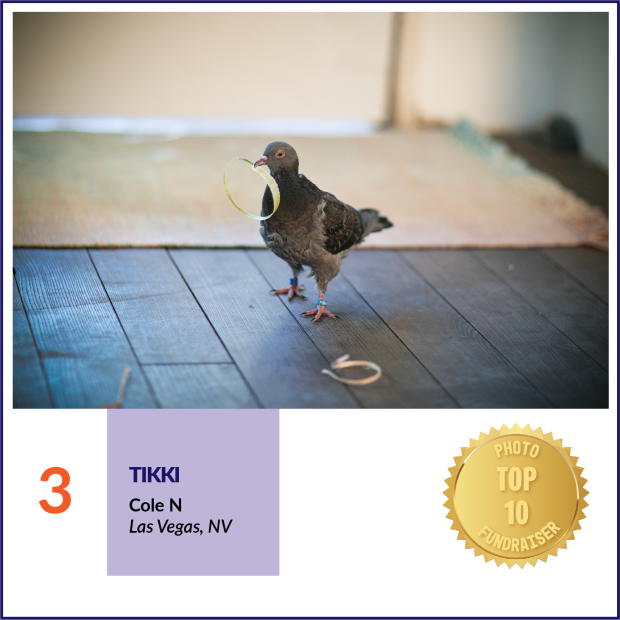
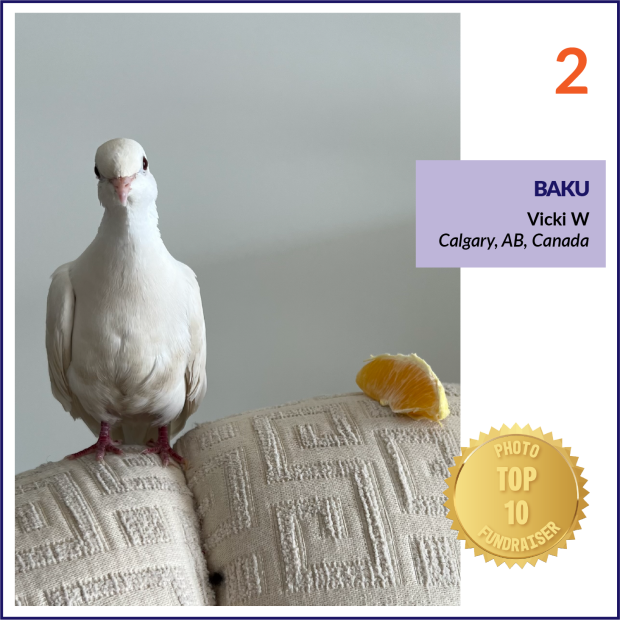
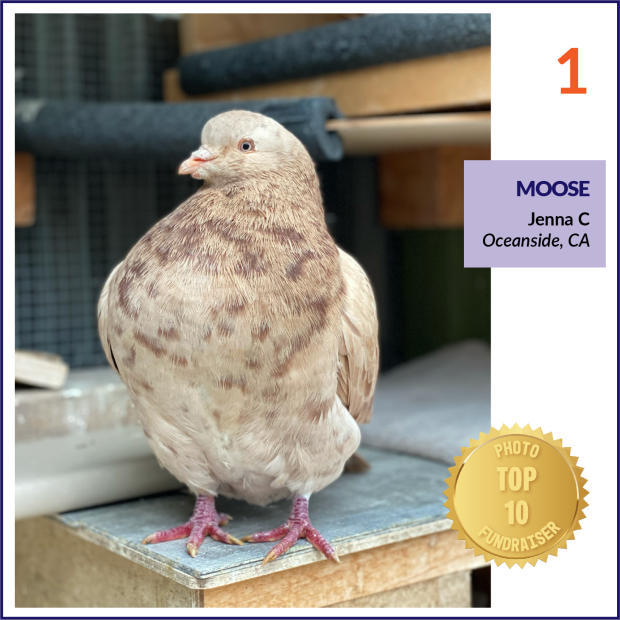
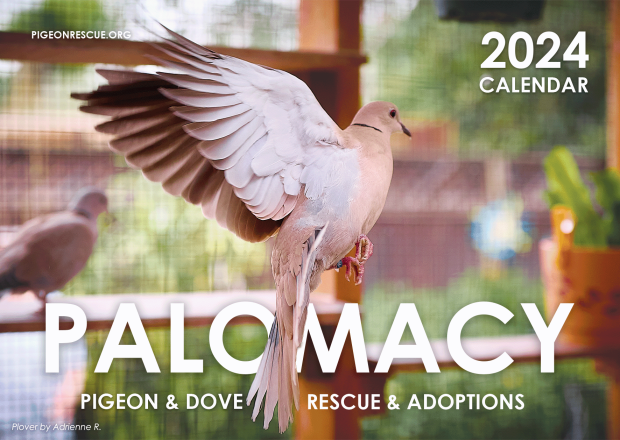
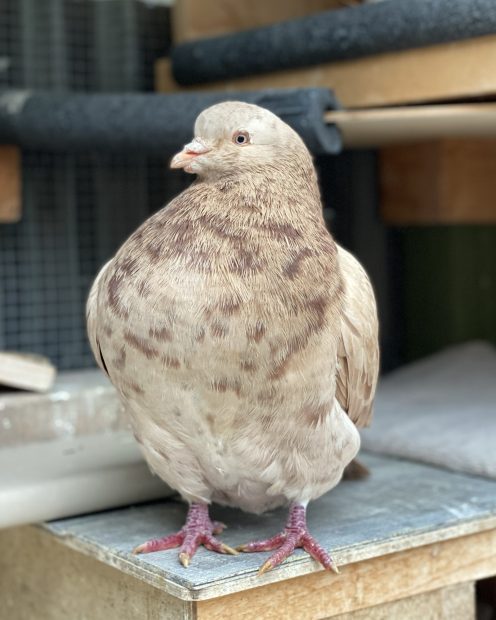
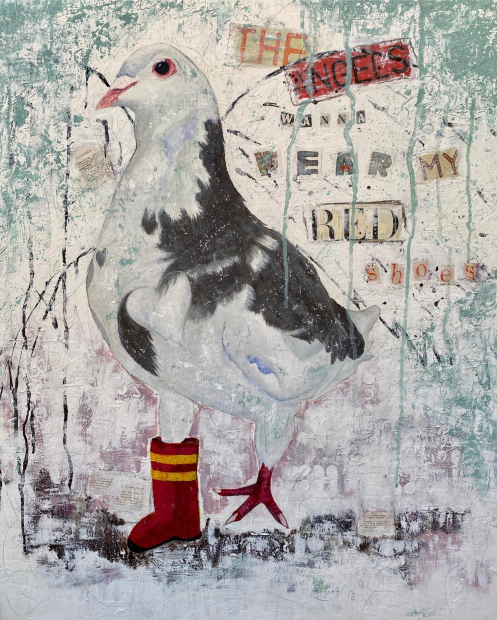
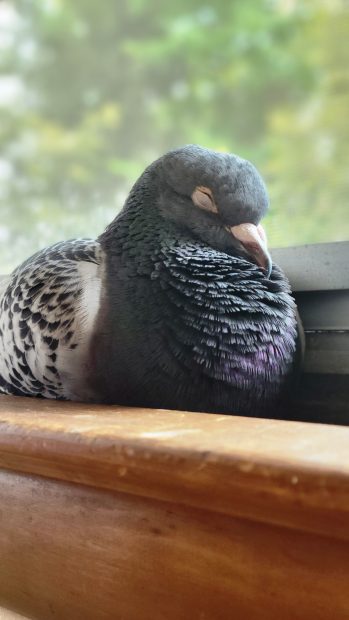
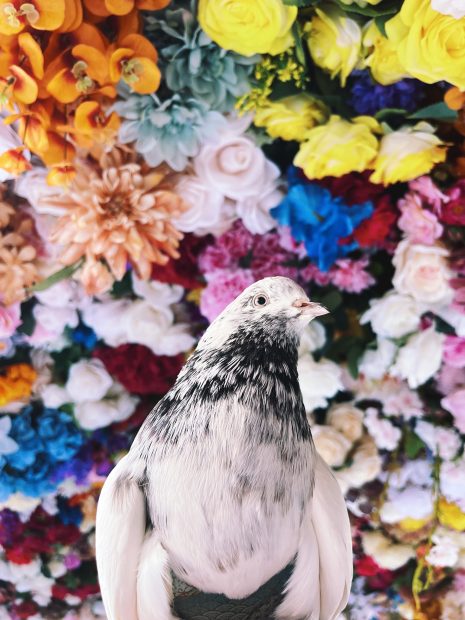
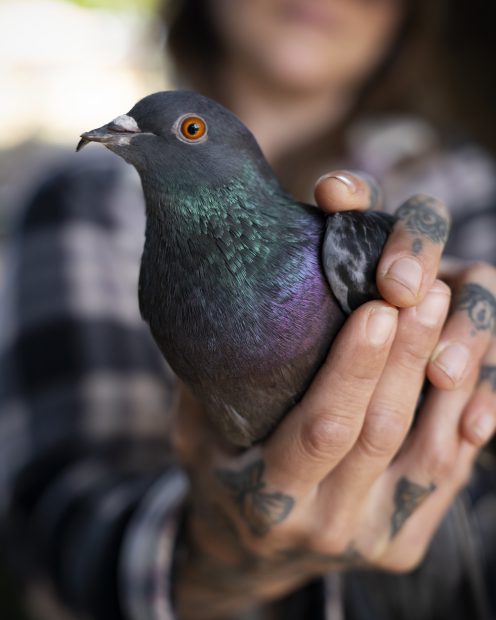
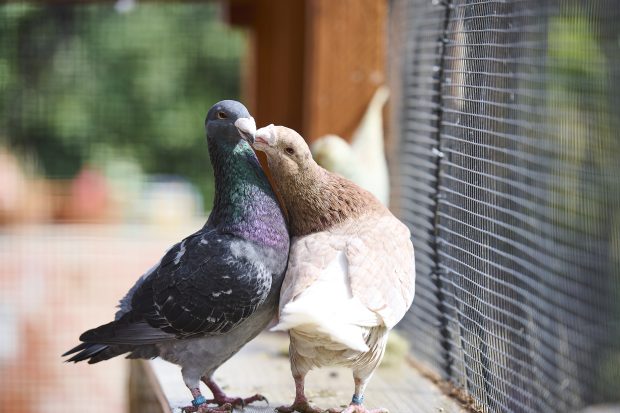
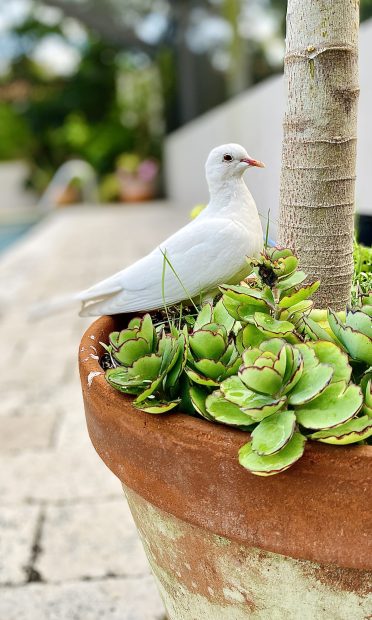
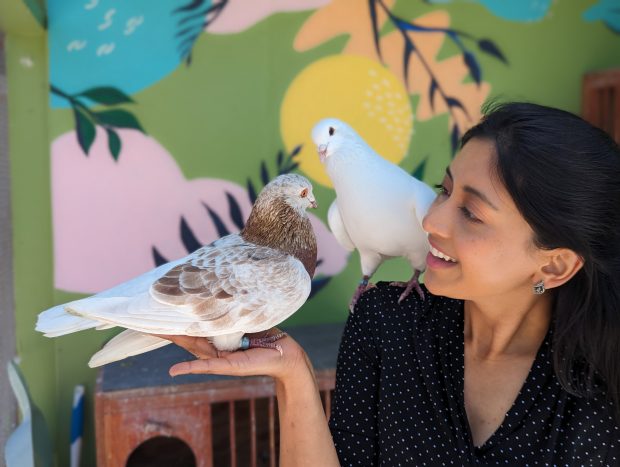
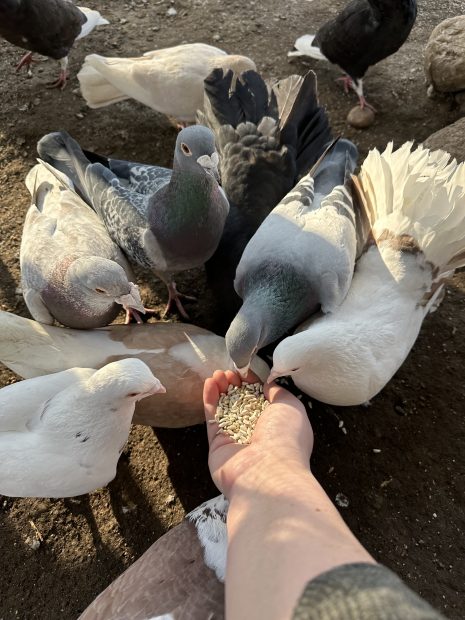
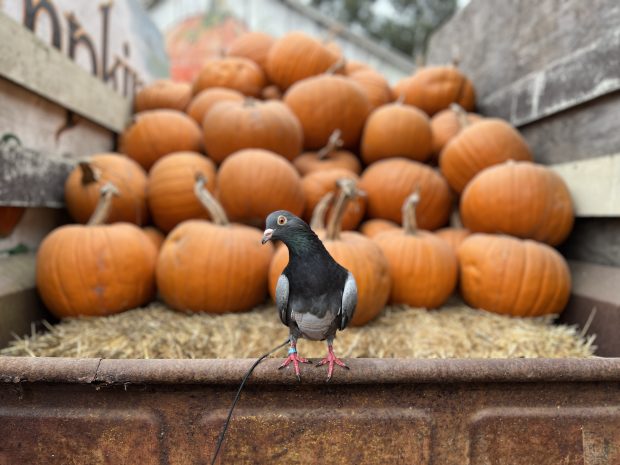
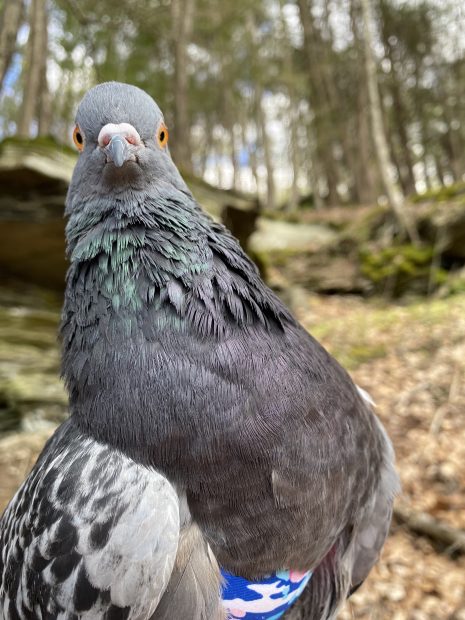
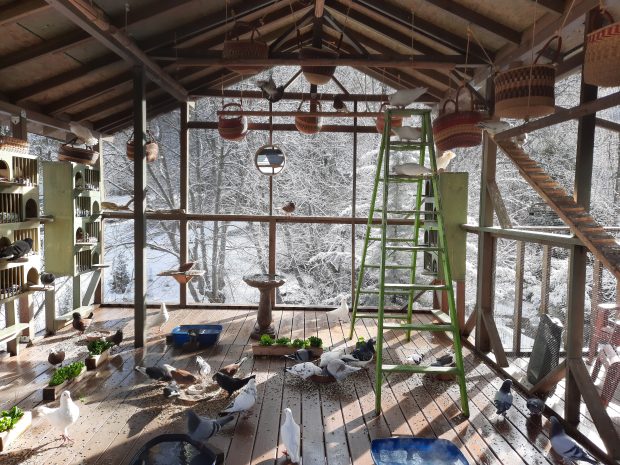
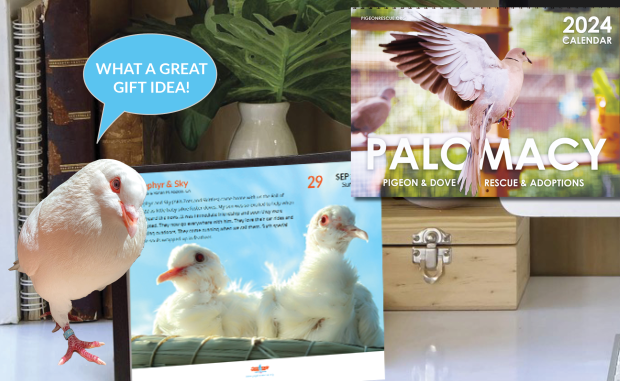
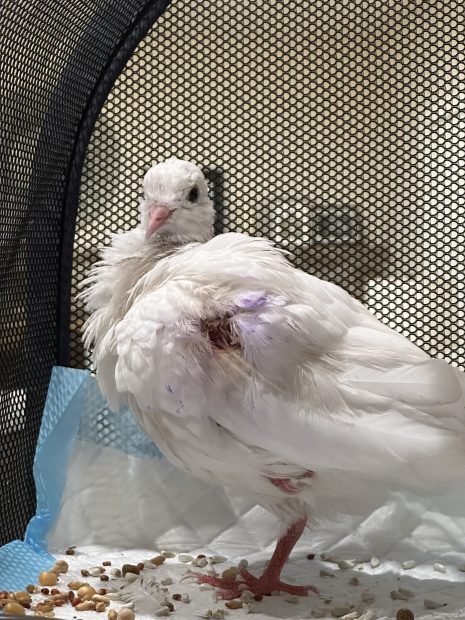
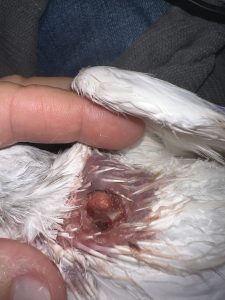
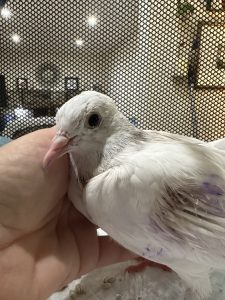
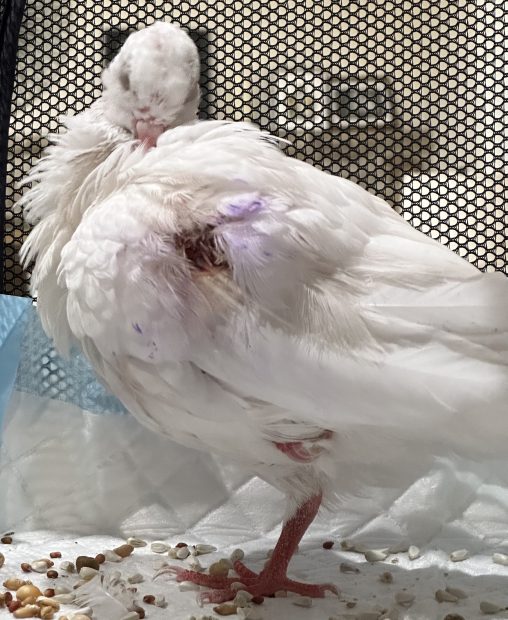
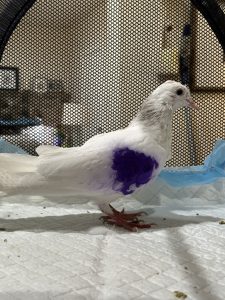
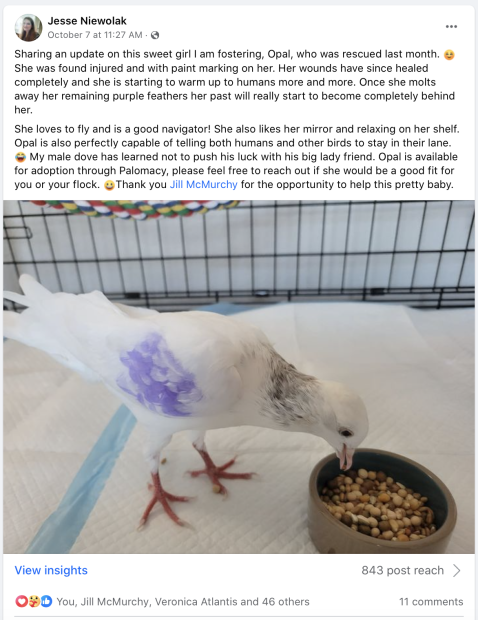 .
.